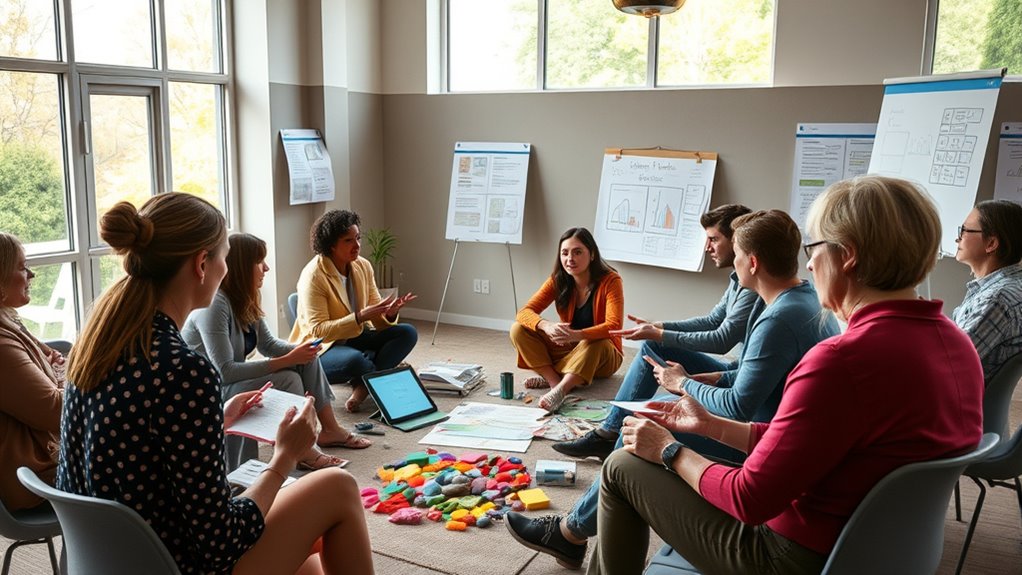To design inclusive workshops for different learning styles, you need to adapt your methods to engage visual, auditory, and kinesthetic learners. Use clear visual aids, encourage hands-on activities, and incorporate sounds or music to enhance understanding. Mix media like videos, discussions, and role plays to appeal to all. Pay attention to participant cues and modify approaches as needed. Keep exploring how tailored strategies can create a more engaging, supportive environment for everyone involved.
Key Takeaways
- Incorporate varied teaching methods like visuals, discussions, and hands-on activities to address diverse learning preferences.
- Use engaging visual aids such as diagrams, infographics, and mind maps to support visual learners.
- Include auditory and kinesthetic activities like role-plays, music, and movement to engage all participant styles.
- Utilize multi-modal tools like videos, interactive polls, and digital whiteboards to cater to different learning needs.
- Continuously assess participant engagement and adapt approaches to ensure inclusivity and effective learning for everyone.
Understanding Different Learning Preferences
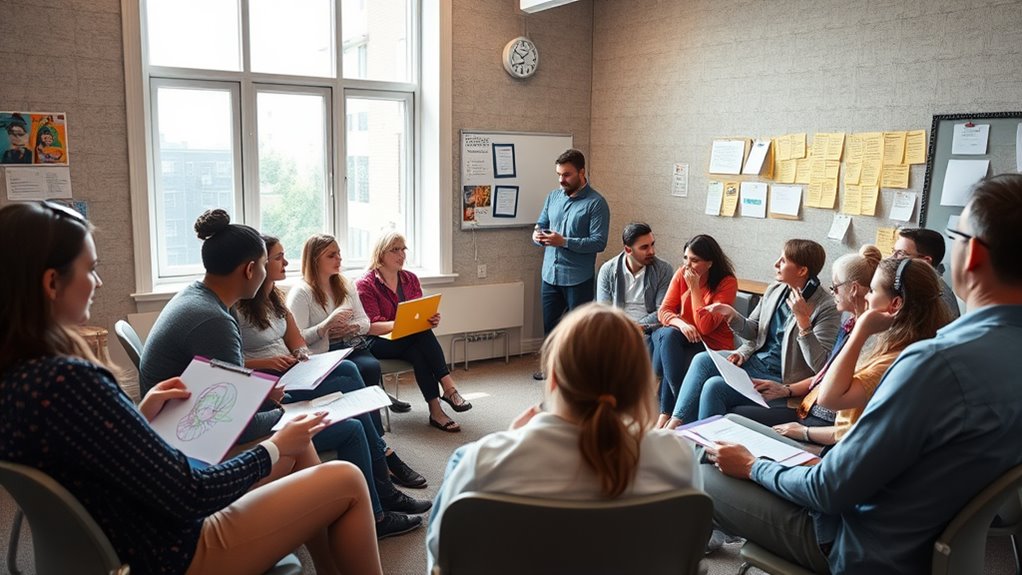
Have you ever wondered why some people grasp new concepts quickly while others need more time or different approaches? It’s often due to their unique learning preferences. A supportive learning environment recognizes these differences and adapts accordingly. Effective facilitation techniques involve observing how participants engage with material—some learn best through visuals, others through hands-on activities, or listening. By understanding these preferences, you can tailor your approach to ensure everyone stays engaged and absorbs information effectively. This might mean incorporating various methods, such as group discussions, demonstrations, or visual aids, to create an inclusive atmosphere. When you acknowledge individual learning styles, you foster better understanding, participation, and retention, making your facilitation more impactful for all learners. Additionally, incorporating different learning styles in your workshops can improve overall system efficiency and participant satisfaction.
Strategies for Visual Learners
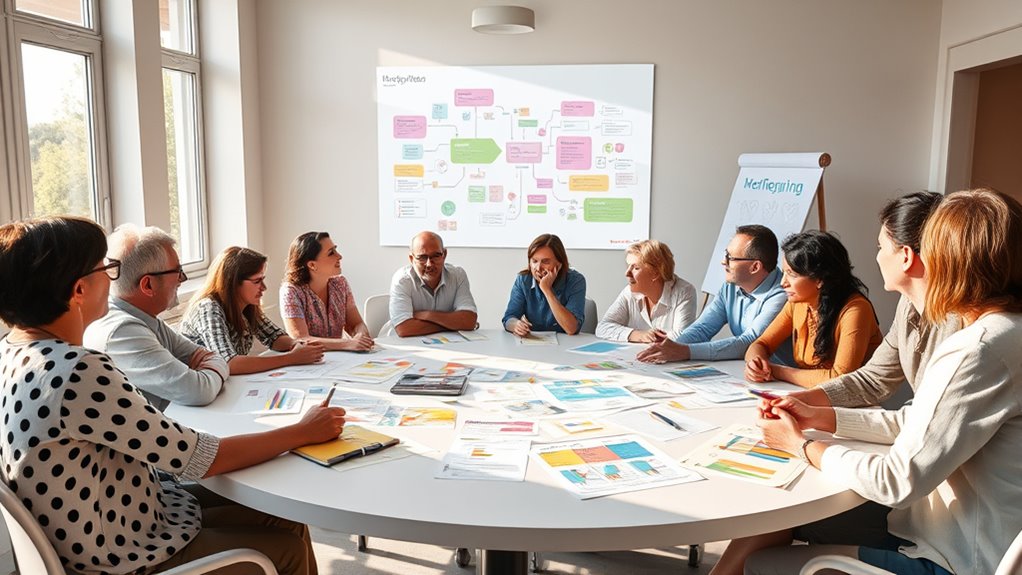
To effectively support visual learners, incorporate clear and engaging visual aids into your facilitation. Use tools like mind mapping to help participants organize ideas visually, making complex concepts more accessible. Encourage participants to create their own mind maps, which can enhance understanding and retention. Incorporate visual storytelling techniques by using images, diagrams, and infographics that illustrate key points and foster connections. These visuals help learners process information more efficiently and maintain engagement. Keep your visuals simple yet impactful, avoiding clutter that can distract. By integrating these strategies, you create an inclusive environment that leverages visual strengths, ensuring all learners can follow along and contribute meaningfully. Additionally, drawing inspiration from Hyundai Tuning modifications, you can customize your visual aids to optimize clarity and appeal, making the learning experience more dynamic and tailored to diverse needs. This approach helps visual learners grasp content more quickly and retain it longer.
Engaging Auditory and Kinesthetic Participants
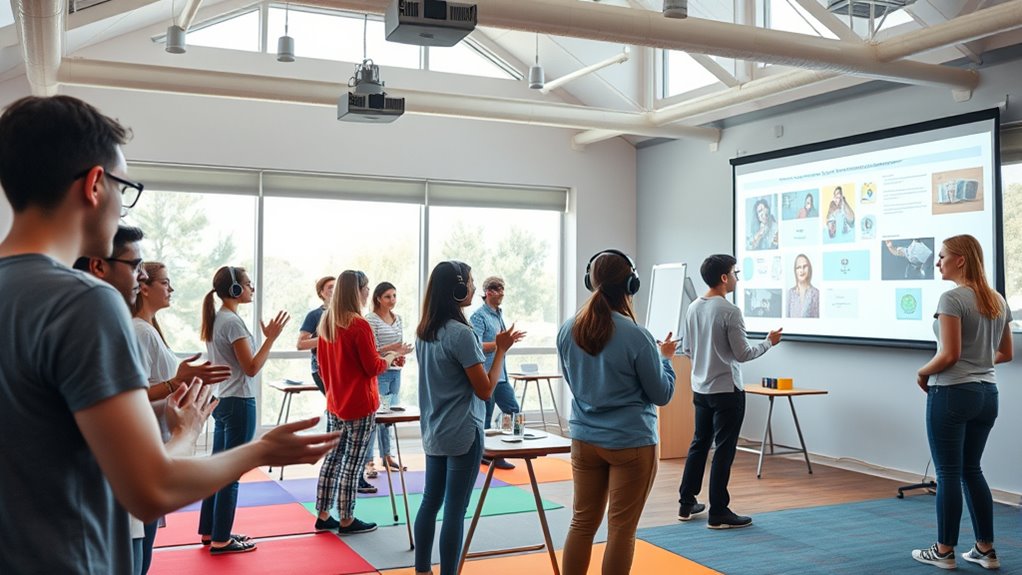
Engaging auditory and kinesthetic participants requires dynamic facilitation techniques that activate their preferred learning channels. For auditory learners, incorporate music integration—playing background music or using rhythmic cues to reinforce key points—making the session more memorable. For kinesthetic participants, role playing techniques work effectively; by acting out scenarios, they can physically engage with the material. These methods keep energy levels high and promote active participation. When facilitating, vary activities to cater to both styles simultaneously, such as pairing role plays with brief musical prompts or discussions. This approach fosters inclusivity and ensures everyone remains engaged. Additionally, understanding learning styles can help facilitators tailor their methods to better meet participant needs. By intentionally blending music integration with role playing, you create a lively, interactive environment that appeals to diverse learning preferences.
Incorporating Multi-Modal Activities
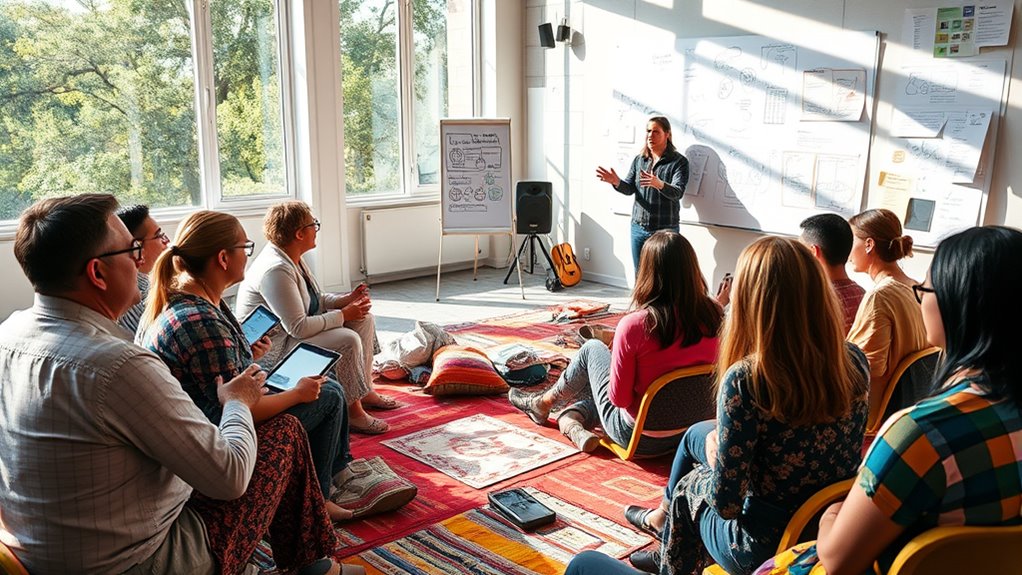
Building on the energy generated through music and role-playing activities, incorporating multi-modal activities further enriches the learning experience. By integrating technology, you can offer visual, auditory, and kinesthetic engagement, appealing to diverse learning styles. For example, using videos, interactive polls, or digital whiteboards complements physical activities and caters to learners who prefer visual or tech-based input. Additionally, consider cultural considerations when designing these activities; assure materials reflect participants’ backgrounds and avoid cultural insensitivity. This approach fosters inclusivity and respect, making every learner feel valued. Lesser-known spots can serve as inspiring settings for these activities, providing unique backdrops that stimulate creativity and engagement. Multi-modal activities break down barriers, promote active participation, and help reinforce concepts through different senses and perspectives. Ultimately, thoughtful technology integration and cultural awareness create a dynamic, accessible environment that benefits all learners.
Assessing and Adapting to Learner Needs
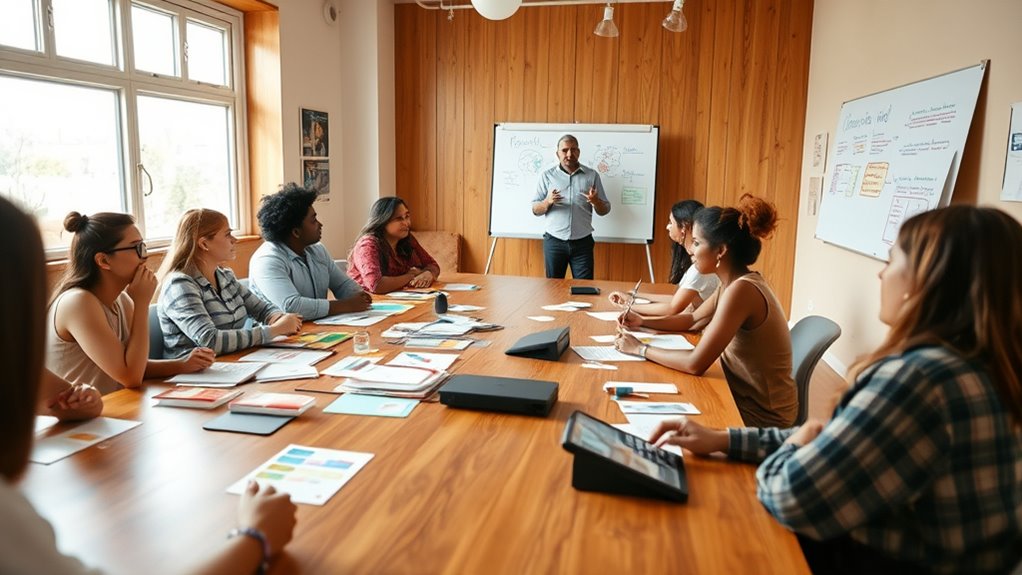
Understanding your learners’ needs is essential for creating an inclusive facilitation environment. Start with inclusive evaluation methods to gather insights into their diverse learning preferences, backgrounds, and challenges. Use adaptive techniques to modify your approach dynamically, ensuring everyone stays engaged and can participate fully. Incorporate quick check-ins, anonymous surveys, or one-on-one conversations to identify specific needs. Pay attention to verbal and non-verbal cues, adjusting your activities accordingly. Flexibility is key—be ready to simplify concepts, provide alternative formats, or slow down when necessary. Additionally, considering the importance of projector technology and how it impacts visual learning, incorporating multimedia tools can enhance understanding for visual learners. By continuously assessing and adapting, you create a safe space where all learners feel valued and supported, ultimately enhancing their learning experience and fostering an inclusive atmosphere.
Frequently Asked Questions
How Can Technology Enhance Inclusive Facilitation?
Technology can greatly enhance inclusive facilitation by providing interactive tools that engage diverse learners and accessibility features that accommodate various needs. You can use platforms with real-time polls or breakout rooms to foster participation. Accessibility features like captions, text-to-speech, and adjustable font sizes guarantee everyone stays engaged. By leveraging these tools, you create a more inclusive environment where all participants feel valued and can contribute effectively.
What Are Common Challenges in Accommodating Diverse Learners?
When you accommodate diverse learners, you face challenges like differing communication styles and varying cultural sensitivities. You need to adapt your approach to guarantee everyone feels valued and understood. This can be tough, especially when participants have different backgrounds and ways of expressing themselves. By being aware of these differences, you can create a more inclusive environment, encouraging active participation and respect for all perspectives.
How to Handle Disruptive or Disengaged Participants?
When managing disruptions or disengaged participants, you should stay calm and address issues promptly. Encourage engagement by asking open-ended questions and involving everyone in activities. Set clear ground rules at the start, and if someone is disruptive, gently redirect their focus without confrontation. Use active listening to understand their concerns, which helps create a respectful environment. By managing disruptions effectively, you foster an inclusive space where all participants feel valued and engaged.
What Are Best Practices for Virtual Inclusive Workshops?
When hosting virtual inclusive workshops, you should prioritize accessible tools like screen readers and captions to guarantee everyone can participate. Practice cultural sensitivity by respecting diverse backgrounds and communication styles. Engage participants with varied activities, such as polls or breakout rooms, and regularly check for understanding. These practices foster an inclusive environment where all learners feel valued, supported, and able to contribute effectively.
How to Measure the Success of Inclusive Facilitation Strategies?
Think of measuring success as tuning a musical instrument—you need clear feedback to hit the right notes. You can do this by implementing feedback mechanisms and participant surveys that capture honest insights. These tools act like a compass, guiding you to improve your facilitation strategies. Regularly analyzing this data helps you gauge whether your goals are met and if your workshop resonates with everyone, ensuring your inclusive approach hits the mark.
Conclusion
By understanding diverse learning preferences, by implementing varied strategies, and by continuously evaluating and adapting, you create workshops that truly engage everyone. You embrace visual, auditory, and kinesthetic learners equally. You design activities that are inclusive, interactive, and inspiring. You foster an environment where every learner feels valued, supported, and motivated. Ultimately, you guarantee your workshops are accessible, effective, and memorable for all, because inclusive facilitation isn’t just a method — it’s a mindset you carry throughout your facilitation journey.
